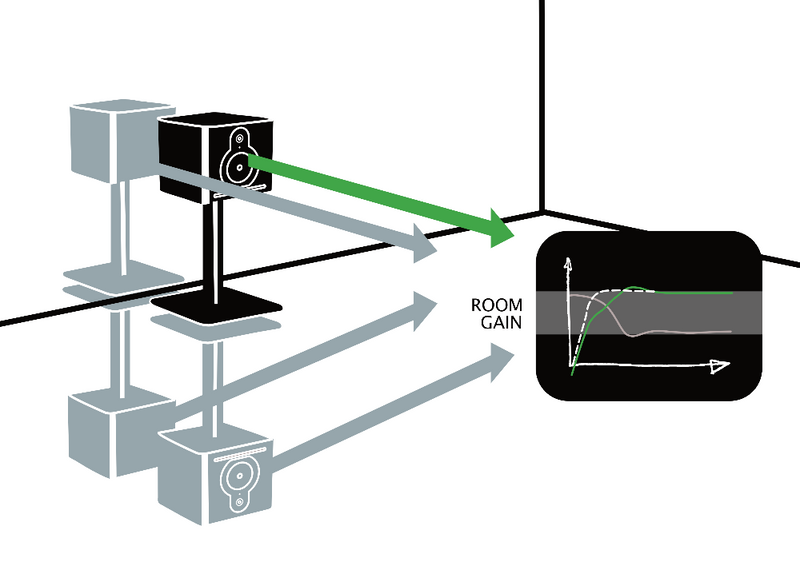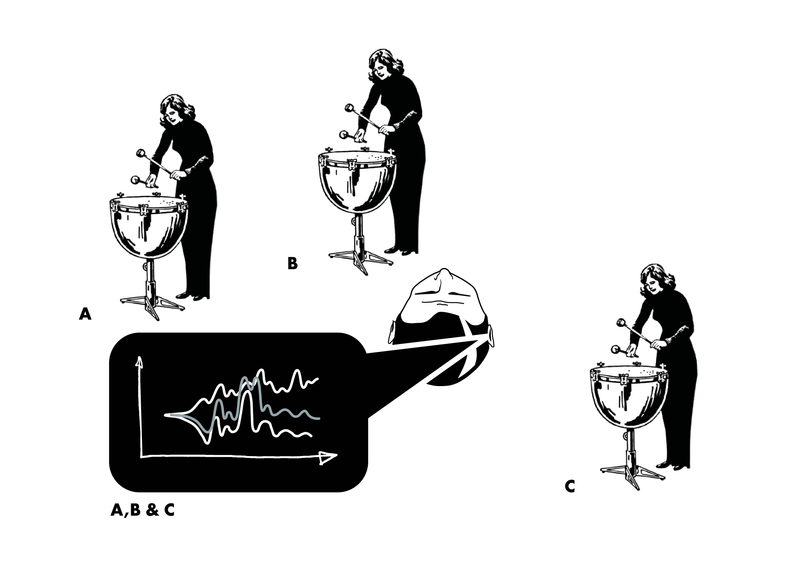
Technology
Most manufacturers use echo-free chambers when designing their loudspeakers, aiming for a flat frequency response, verified by a measurement microphone. What is not often considered is that a home is nothing like an echo-free chamber, and ears are not measurement microphones. We base our designs on 'ordinary rooms' and on how human hearing works. This gives us a slightly different goal in the design process. Two principles that differentiate us from others are how we work with bass support from the rear wall and how we compensate for some inherent flaws of the stereo system.

Surface support
The frequency response of our speakers is adapted to utilize the sound reflected from the rear wall and the floor. Together, this reflected and direct sound creates the response curve we aim for. This principle provides reinforcement in the lower bass range, allowing us to achieve a substantial amount of bass from very small enclosures. This also makes wall placement an asset rather than a problem; most speakers require placement with distance from the back wall.

Mending stereo
As mentioned above, most loudspeaker engineers aim for a flat response curve, verified with a measurement microphone. However, human hearing doesn’t work that way. When hearing sound reproduced in stereo, your right ear hears the right speaker slightly louder than the left. But you also hear the left speaker in your right ear, slightly later and approaching the ear in a different angle. We claim that the sum of these two hearing impressions should generate a “flat response curve.” To achieve this, we work with an adjusted response curve in our design goal.
